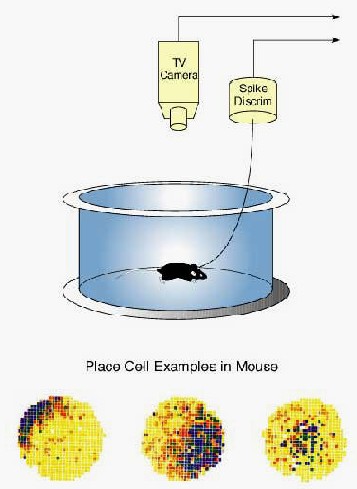 |
Spatial memory can
be studied in the mouse by recording from individual pyramidal cells in the
hippocampus. The firing pattern of these "place" cells create an internal
representation of the animalís location within its surrounding. A mouse is
attached to a recording cable and placed inside a cylinder (49 cm in
diameter by 34 cm high). The other end of the cable goes to a 235-channel
commutator attached to a computer-based spike-discrimination system. The
cable is also used to supply power to a light-emitting diode mounted on the
headstage the mouse carries. The entire apparatus is viewed with an overhead
TV camera whose output goes to a tracking device that detects the position
of the mouse. The output of the tracker is set to the same computer used to
detect spikes, so that parallel time series of positions and spikes are
recorded. The occurrence of spikes as a function of position is extracted
from the basic data and is used to form two-dimensional firing-rate patterns
that can be numerically analyzed or visualized as color-coded firing-rate
maps. Dark areas indicate regions in the circular enclosure in shich the
cells fires at high rates.
|
